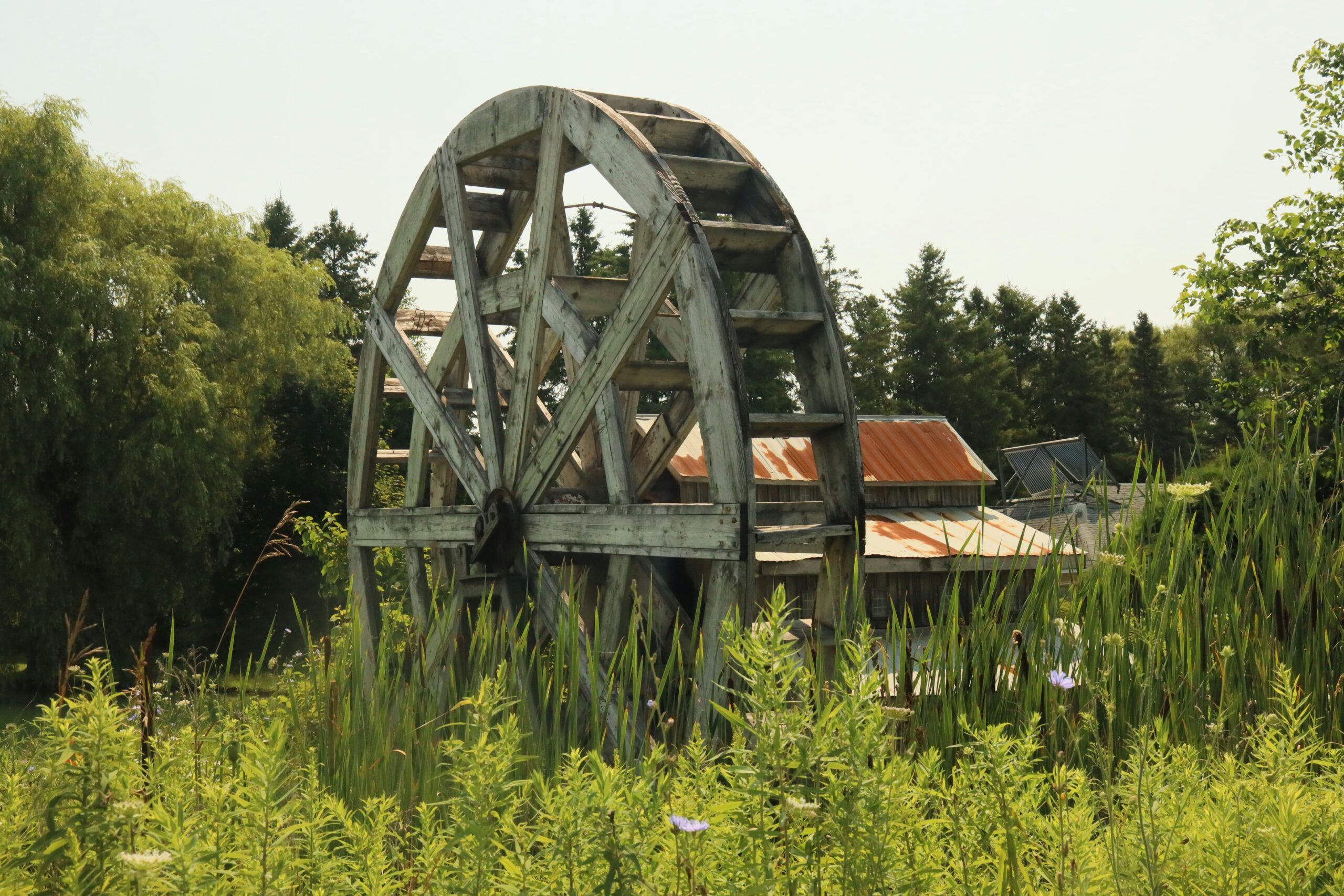
Origins in a Rural Landscape
In the early 19th century, when the American frontier still stretched wide and industry was more muscle than machine, the Sim Corder/Harrison Mill stood as both a lifeline and a landmark. Built in an era when communities relied on locally produced goods, mills like this were more than simple production sites—they were centers of trade, social exchange, and technological experimentation. Positioned near a reliable water source, the mill used the flow of a creek to turn its large waterwheel, a symbol of harnessed nature that transformed raw materials into market-ready products. Farmers brought grain to be milled into flour, loggers sent timber to be cut into lumber, and craftsmen found steady work in a place where the rhythm of the wheel marked the pulse of the community.
The Mechanics of Progress
At its heart, the mill was a marvel of mechanical ingenuity. The waterwheel—often overshot for greater efficiency—transferred the creek’s kinetic energy into rotational force, which powered grinding stones, saw blades, and sometimes even textile looms. The design relied on a careful balance of carpentry, metalwork, and engineering, with wooden gears turning in sync under the watch of skilled millers. This system required constant maintenance, from greasing axles to repairing paddles, making the mill as much a workshop for innovation as it was a production center. Its ability to handle multiple functions under one roof marked it as a valuable industrial asset in a period before steam engines became widespread.
Economic Lifeline for the Community
The Sim Corder/Harrison Mill was more than a mechanical curiosity—it was an economic cornerstone. In a time when transportation was slow and costly, having a local mill meant farmers could process their grain without the expense of sending it far afield. This not only saved money but also kept wealth circulating within the community. The mill provided employment not just for millers but also for wagon drivers, carpenters, and apprentices learning the trade. Its output—flour, lumber, and sometimes finished goods—fed into local markets, building a self-sustaining economic loop that was vital in an era before large-scale industrial networks dominated commerce.
Social and Cultural Significance
Beyond its practical function, the mill was a gathering place. Farmers often lingered while waiting for their grain, exchanging news, gossip, and ideas. Seasonal events, like the first milling after harvest or community repair days, brought neighbors together in a shared sense of purpose. The mill’s steady hum became part of the local soundscape, a reminder that work was being done and life was moving forward. Oral histories from the area often place the mill at the center of pivotal moments—whether as a meeting point during times of conflict or a shelter during floods and storms.
Adapting to Changing Times
As technology advanced, the Sim Corder/Harrison Mill faced the challenge of modernization. The mid-to-late 19th century saw the introduction of steam power, allowing mills to operate regardless of water flow. While some water-powered mills adapted by installing steam engines or upgrading their grinding systems, others fell into decline as railroads and larger industrial complexes made local production less essential. The Sim Corder/Harrison Mill navigated this transition with mixed results—records suggest it incorporated some mechanical upgrades while retaining its traditional waterwheel, perhaps as much for heritage as for utility.
Preservation and Historical Legacy
By the early 20th century, many such mills had either been dismantled or converted to other uses. However, the Sim Corder/Harrison Mill managed to retain its structural integrity, in part due to local preservation efforts. Historical societies recognized its value as a tangible link to the region’s early industrial era. Today, it stands not only as a relic but also as an educational site, offering visitors insight into how ingenuity, community, and natural resources once worked hand in hand. The creak of wooden beams and the sight of the waterwheel turning continue to inspire a sense of connection to those who labored there centuries ago.
Lessons from the Wheel
The story of the Sim Corder/Harrison Mill is more than a chronicle of wood, stone, and water. It reflects the broader narrative of American industry—how small-scale innovation laid the foundation for national economic growth. It reminds us that before factories and assembly lines, there were localized systems of production rooted in craftsmanship and community resilience. In an age of digital automation, the mill’s enduring presence serves as a physical reminder of the balance between technology and the human touch.